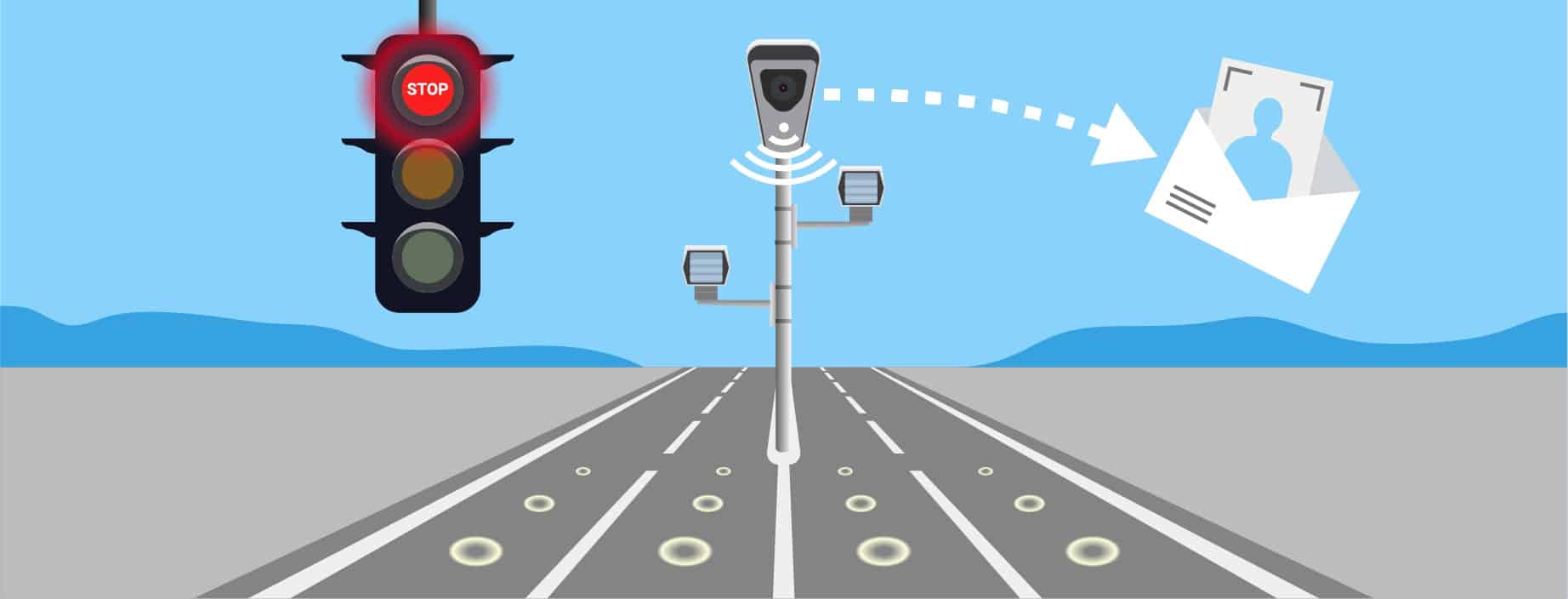Tech
Understanding Red Light Camera Tickets – How They Work

Whether you’re an avid motorist or someone caught off guard by a red light camera, you’ve probably wondered how they work. They’re not just a standard film trope but also an essential part of traffic enforcement programs in many cities and states.
They’re triggered by sensors in the intersection when a vehicle crosses over them when the light is red. They take photos of the vehicle and its license plate.
Induction Loops
Several types of induction loops can be used to detect vehicles at intersections. The most common type is a perimeter loop. They work by using a wire that runs around the outside of a building and creates a magnetic field in the room.
Once a vehicle passes over the loop, it causes a change in the loop’s magnetic field, which is then relayed to the system’s controller, and a traffic signal is issued. These systems are not affected by the weather and are extremely reliable.
The inductive loop is then connected to a sensor that measures the changes in the magnetic field. It allows the system to determine the presence of a vehicle in the area and then triggers the red light camera.
Cameras
Red light cameras are an increasingly common traffic safety measure. They have been used for over 20 years and are a common source of controversy.
These automated systems trigger a camera or multiple cameras as a vehicle passes over a sensor in an intersection with red light. The camera then captures vehicle photos, which can show license plate numbers.
The images are reviewed by trained police officers or other authorized civilian employees before a ticket is issued to the vehicle’s registered owner. It helps to ensure that the pictures are accurate and that there was no error in the system or that the camera failed.
A citation is only issued if the camera’s pictures clearly show that the vehicle was running the red light. It is essential because it makes it harder for a defence to argue that the picture did not depict the correct vehicle and driver.
While a ticket can be costly, it doesn’t appear on your driving record or affect your insurance rates. The state and local laws determine the fine amount.
If you receive a ticket from a red light camera, consider hiring an attorney to help fight the ticket. It is especially true if you suspect the photographs and videos are inaccurate. A red light camera fine nsw can end up with costly court costs.
Sensors in the Pavement
A red light camera system consists of one or more special cameras, which can be normal photographic units or digital cameras, mounted on poles at targeted intersections and connected to the traffic signal and special sensors in the pavement.
The system continuously monitors the traffic signal. The camera is triggered when a vehicle passes over the sensors above a predetermined minimum speed and at a specified time after the light turns red. Usually, two photographs are taken; one when the vehicle crosses the stop line and a second when the vehicle is in the intersection.
The most advanced sensor technology includes fibre optical sensors, which can measure the strain and temperature of a road’s pavement as moving vehicles pass over it.
Ticketing
Many states allow automated red light cameras in intersections to catch drivers who fail to stop at red lights. These systems are typically owned and operated by third-party companies. When an offending vehicle fails to stop at a red light, the camera takes pictures or video of the violation. It sends them to a law enforcement agency or government agency for processing.
If a violation is logged, the system sends a ticket to the registered owner of the offending vehicle via the Postal Service. The citation includes the violation’s date, time, and vehicle speed, along with a photo of the driver and a video of the violation.
The ticket carries a fine, and points will likely be assessed on your driving record. These tickets can vary significantly depending on your state and what other violations you have received.
Red light cameras are often in place in high-traffic areas where drivers disobey traffic laws and run red lights. These cameras take photographs of motorists and mail them tickets for a $50 or more fine. Points are not assessed or reported to auto insurance companies, and the vehicle’s registered owner is responsible for paying the fine. If the owner cannot pay the fine, a default conviction is assigned, and a $25 late fee will be added to the total.
While some argue that these cameras are unreliable, others say they do a great job of deterring red-light runners and improving safety in the area. They can also help reduce accidents and fatalities that occur at intersections.
Despite the ongoing controversy over these automated red light cameras, they have been shown to reduce the number of red light accidents.
They also effectively reduce traffic accidents that may result from drivers who make illegal left turns. In addition, they can save motorists money by lowering their car insurance rates.
While it’s true that some drivers are ticketed in error by these cameras, many cases can be successfully challenged. If you think you were ticketed in error or need clarification on your citation, contact an experienced attorney for advice.
-
Blog1 year ago
MyCSULB: Login to CSULB Student and Employee Portal – MyCSULB 2023
-
Android App3 years ago
Cqatest App What is It
-
Android1 year ago
What Is content://com.android.browser.home/ All About in 2023? Set Up content com android browser home
-
Software2 years ago
A Guide For Better Cybersecurity & Data Protection For Your Devices
-
Latest News2 years ago
Soap2day Similar Sites And Alternatives To Watch Free Movies
-
Android2 years ago
What is OMACP And How To Remove It? Easy Guide OMACP 2022
-
Android3 years ago
What is org.codeaurora.snapcam?
-
Business2 years ago
Know Your Business (KYB) Process – Critical Component For Partnerships





















